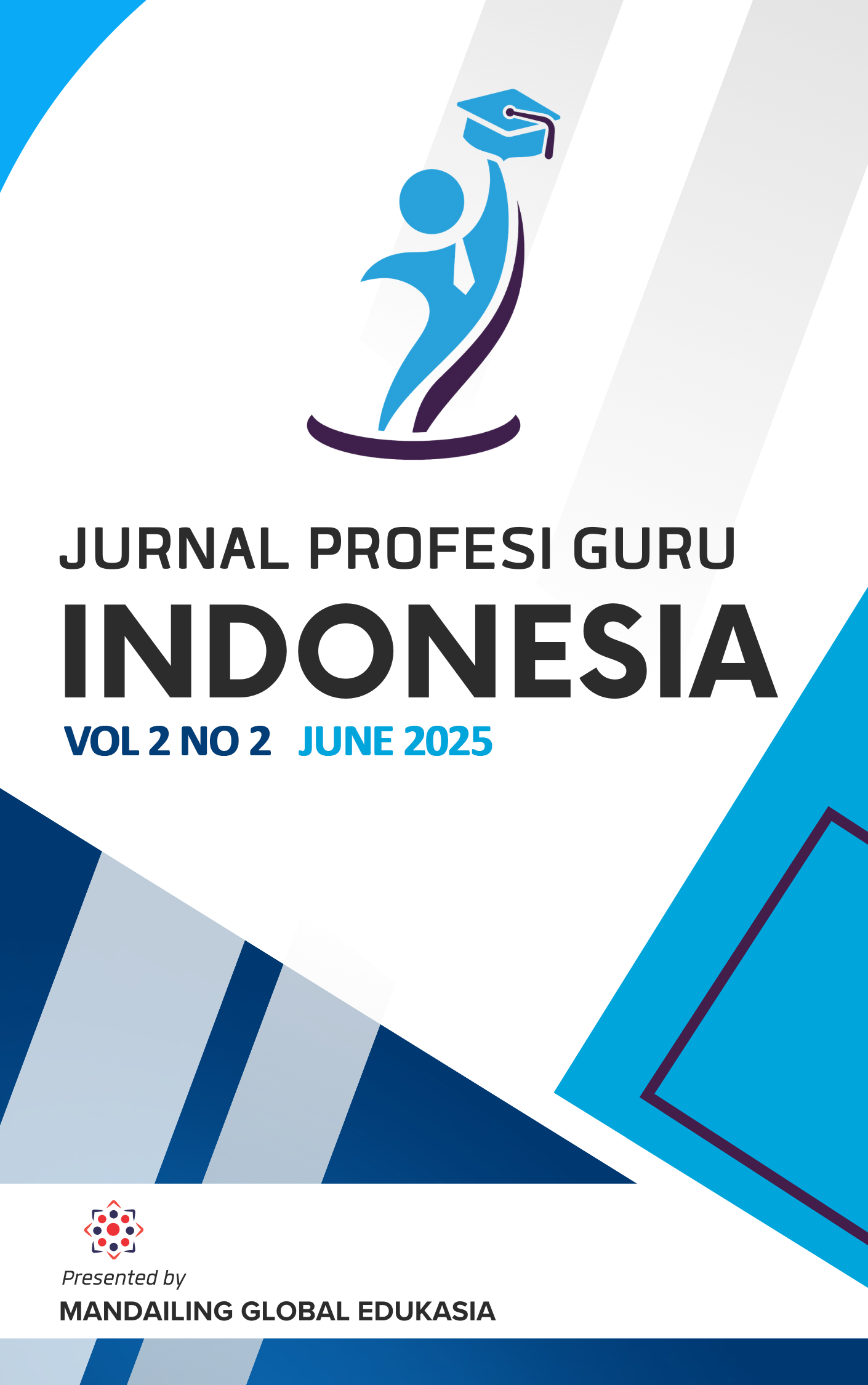Analysis of the Scientific Literacy Skills of Prospective Chemistry Teacher Students on Acid-Base Material
DOI:
https://doi.org/10.62945/jpgi.v2i2.745Keywords:
Science literacy, prospective teachers, chemistry, knowledge aspectsAbstract
Scientific literacy skills are essential in the chemistry learning process, especially for prospective chemistry teacher students. Scientific literacy is one of the demands in 21st Century learning. The scientific literacy skills of prospective chemistry teacher students analyzed in this study are the knowledge aspect consisting of 3 sub-aspects, namely content, epistemic, and procedural. The purpose of this study was to determine the initial scientific literacy abilities of prospective chemistry teacher students in the knowledge aspect, especially in 3 sub-aspects, namely content, epistemic, and procedural. This study used a quantitative descriptive method. The sample in this study was 40 students of the Chemistry Education study program who were taken using a purposive sampling technique. The research instrument used was a scientific literacy test. The data collection technique used in this study was through a scientific literacy skills test based on the 2015 PISA Framework, which consisted of 15 questions that were tested on students. The scientific literacy test instrument related to the knowledge aspect was divided into 3 aspects, namely content, epistemic, and procedural, each aspect consisting of 5 questions. The chemical material tested in the science literacy test is acid-base material, because this acid-base material is a chemical material that still contains several abstract material concepts. The data analysis technique used in this study used a percentage formula and interpreted the average score of the test results according to the science literacy scoring guidelines. Based on the results of the study, the scientific literacy aspect of the knowledge of prospective chemistry teachers was divided into three parts, namely the content aspect with a medium category with an average score of 17.19%. In the epistemic aspect, the average score was 12.32% with a low category, and the procedural aspect with an average score of 12.65% with a low category.
Downloads
References
Fadilah, I. (2020). Analisis karakteristik kemampuan literasi sains konteks bencana gempa bumi mahasiswa pendidikan IPA pada domain pengetahuan prosedural dan epistemik. JIPI (Jurnal IPA dan Pembelajaran IPA), 4(1), 103–119.
Hayat, B., & Yusuf, S. (2010). Literasi matematika dalam PISA. Bumi Aksara.
Hendri, S., & Hasriani, M. (2019). Identifikasi literasi sains mahasiswa (Studi kasus mahasiswa STISIP Amal Ilmiah Yapis Wamena). Journal of Natural Science and Integration, 2(1), 95–104.
Heryani, R., Damaianti, V. S., Syihabudin, & Mulyati, Y. (2020). Evaluation of school literacy movement program at Cimahi City in facing Industrial Revolution 4.0. In 4th International Conference on Arts Language and Culture (ICALC 2019) (pp. 371–378). Atlantis Press. https://doi.org/10.2991/assehr.k.200323.044
OECD. (2018). PISA results in focus. https://www.oecd.org/pisa/pisa-2015-results-in-focus.pdf
OECD. (2023a). PISA 2022 results (Volume I): The state of learning and equity in education. https://doi.org/10.1787/53f23881-en
Pertiwi, A. (2018). Pentingnya literasi sains pada pembelajaran IPA SMP abad 21. Indonesian Journal of Natural Science Education (IJNSE), 1(1), 24–29.
PISA. (2018). PISA 2018 results in focus.
Sirhan, G. (2007). Learning difficulties in chemistry: An overview.
Sulistyawati, E., dkk. (2022). Analisis (deskriptif kuantitatif) motivasi belajar siswa dengan menggunakan model pembelajaran blended learning di masa pandemi COVID-19. KadikmA, 13(1).
Sumanik, E. (2021). Analisis profil kemampuan literasi sains mahasiswa calon guru pendidikan kimia. QUANTUM: Jurnal Inovasi Pendidikan Sains, 12(1).
Toharudin, U. (2011). Membangun literasi sains. Humaniora.
Wulandari, E., & Sholihin, M. (2016). Analisis kemampuan literasi sains pada aspek pengetahuan dan kompetensi sains siswa SMP pada materi kalor. EDUSAINS, 8(1), 66–73.
Zakiyah, S. (2024). Development of Jawi Arabic chemistry module on atomic structure material at Al-Muslimun Integrated Dayah Lhoksukon. Indonesian Journal of Education, 1(3).
Downloads
Published
How to Cite
Issue
Section
License

This work is licensed under a Creative Commons Attribution-ShareAlike 4.0 International License.









